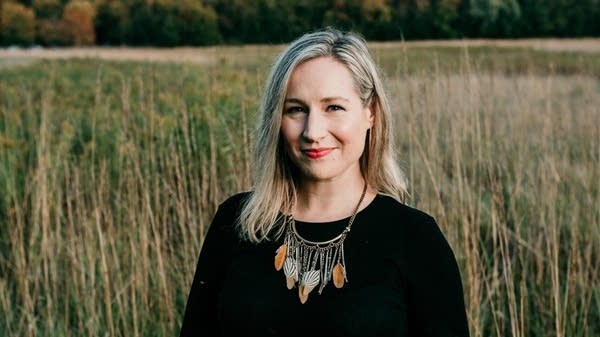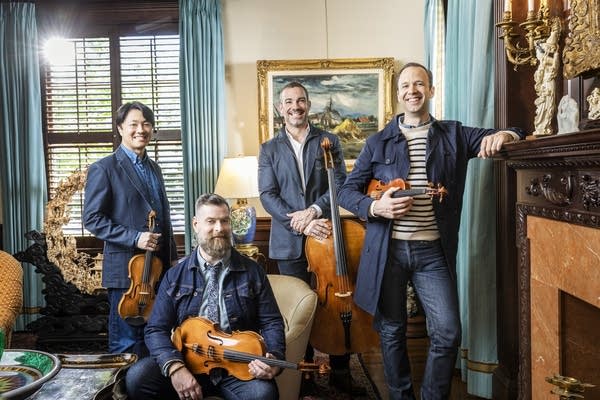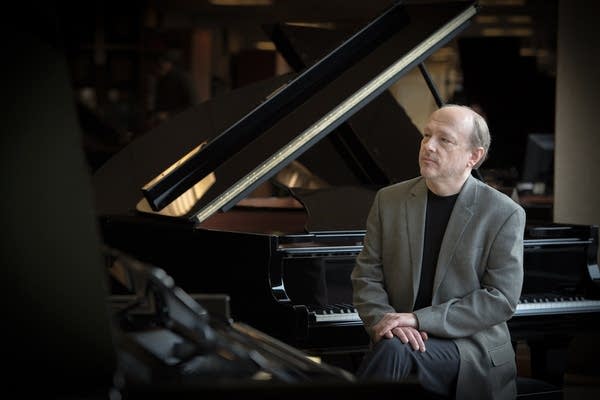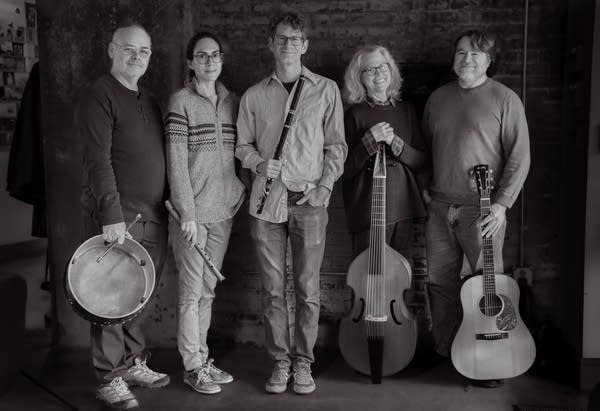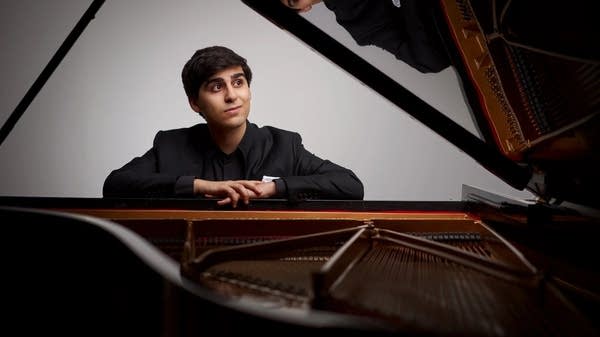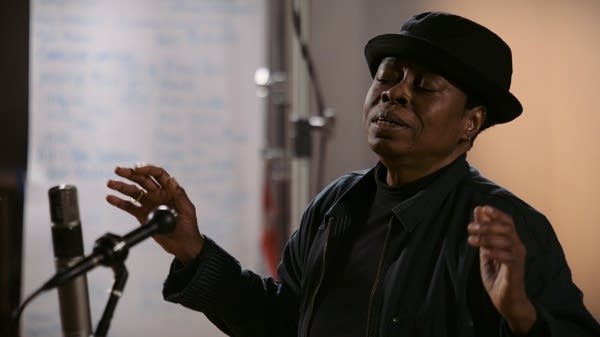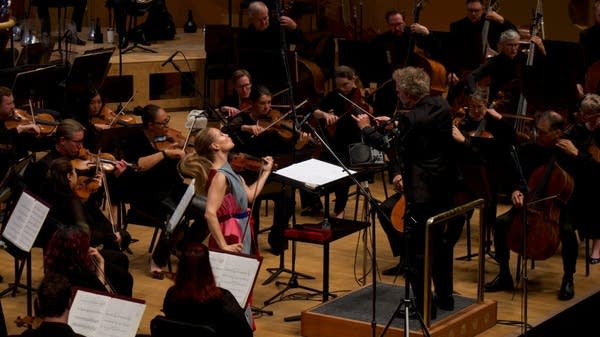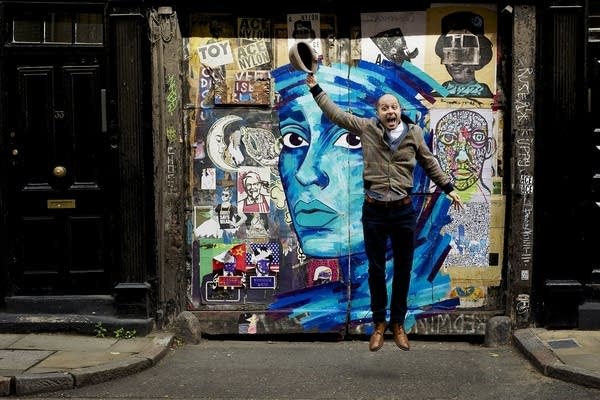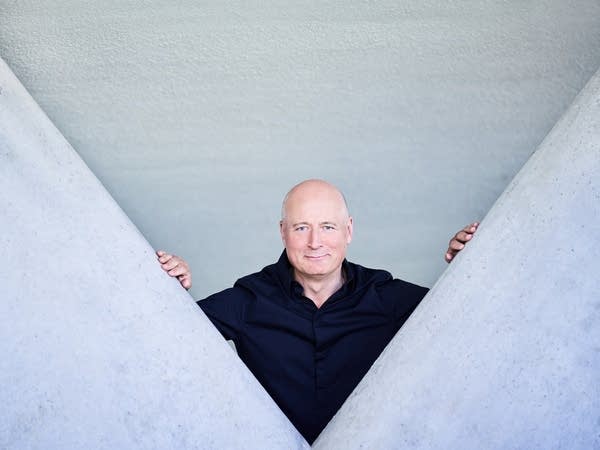
"One is constantly amazed at the mystery that surrounds the conductor. No matter how we teach, how we learn, how we study, no one can put into words exactly why the combination, when it works, works at all. It's communication with the body, with the spirit and yet somehow when it all comes together, the result is something out of pure magic." That's conductor Leonard Slatkin, who actually prefers the title given to him by the Lyon Orchestra which he leads in France, "There I'm called 'chef d'orchestre.' You know what French for baton is? 'Baguette' - I'm the chef with the baguette. I'll take that one," he chuckles. Slatkin has been in the business of conducting for nearly 40 years.
Thirty years ago, Slatkin recorded a Rachmaninov cycle with the St. Louis Symphony. He's altered his approach to this music over the years. That's one reason he's recording a new Rachmaninov cycle with the Detroit Symphony Orchestra, which he's led since 2008. "But I also wanted to showcase the talents of the DSO, which is as at home in this kind of music as any orchestra you could imagine. Of the symphonies, only the second is widely known. The first and third are not played nearly as often. But they're magnificent works. They're works of individuality, of style, of substance. And perhaps they cast a slightly different view of the Rachmaninov most people know, say, from the second piano concerto or the Paganini Rhapsody. This is Rachmaninov on a much bigger scale, a composer truly in charge of the orchestral forces - remember, Rachmaninov was also a conductor," Slatkin adds.
The newest recording in their Rachmaninov cycle features the composer's Symphony No. 3 and the Symphonic Dances, his last work. Slatkin explains how the third symphony is tied together by a musical motto. "In the first movement, we have the sound, very distant, of muted horn, clarinet and a solo cello, the idea being that you kind of blend those three instruments to create a brand new instrument. And this little theme, based on two or three notes, will be heard throughout the symphony in various guises, sometimes exuberant, sometimes wistful, sometimes very lonely. But this becomes the leitmotif for the whole work."
Jorja Fleezanis, the guest concertmaster with the DSO for this performance plays an important role in the second movement. "Well, the symphony's second movement opens with a solo horn accompanied by the harp. And it's a take on that opening motto that we heard in that first movement. It's just sort of played in reverse, a trick Rachmaninov would use quite often. Like many of Rachmaninov's pieces, this movement is divided into three sections. You have this opening with this melting solo in the violin, then played by others. Then in the middle, there's a very aggressive quick march section which then fades away and we're brought back to that horn melody with the harp and finally that beautiful violin melody but this time played by all the violins, just soaring and finally the movement fades to conclusion with the motto that would start the whole symphony."
"The last movement is one of those...for want of a better phrase...kitchen sink movements. Rachmaninov is going to throw everything he knows about compositional structure, orchestration, emotion - it's all going to be laid out in this one movement," Slatkin says. "We've already talked about this motto theme - you'll hear a rhythmic kernel at the beginning of the movement, which sets up pretty much everything that happens in this movement. But you'll also hear Rachmaninov referencing a tune which he would use again and again and again and that is the Dies Irae, the chant for the dead."
Rachmaninov's Symphony No. 3 is an exhilarating work completed in 1936 at a time when he was enjoying a successful career as a composer, a pianist and as a conductor. Leonard Slatkin says you can hear this sense of joy and accomplishment in the music. "And yet you still feel at the end of the third symphony, anyway, that he's held something back. He's given you this jolt at the end and it just comes to an abrupt stop - it has to end that way. There's no choice. But somehow you think - what is it he would like us to think next? And I guess what he wants us to think about next is the piece that would follow, the great Symphonic Dances."
The Symphonic Dances also appear on this new Rachmaninov disc from the Detroit Symphony Orchestra, under the baguette, or make that baton, of Leonard Slatkin.
Love the music?
Show your support by making a gift to YourClassical.
Each day, we’re here for you with thoughtful streams that set the tone for your day – not to mention the stories and programs that inspire you to new discovery and help you explore the music you love.
YourClassical is available for free, because we are listener-supported public media. Take a moment to make your gift today.
Your Donation
About New Classical Tracks®
Host Julie Amacher provides an in-depth exploration of a new classical music release each week.
Subscribe on Apple Podcasts, TuneIn, Radio Public, or RSS.


